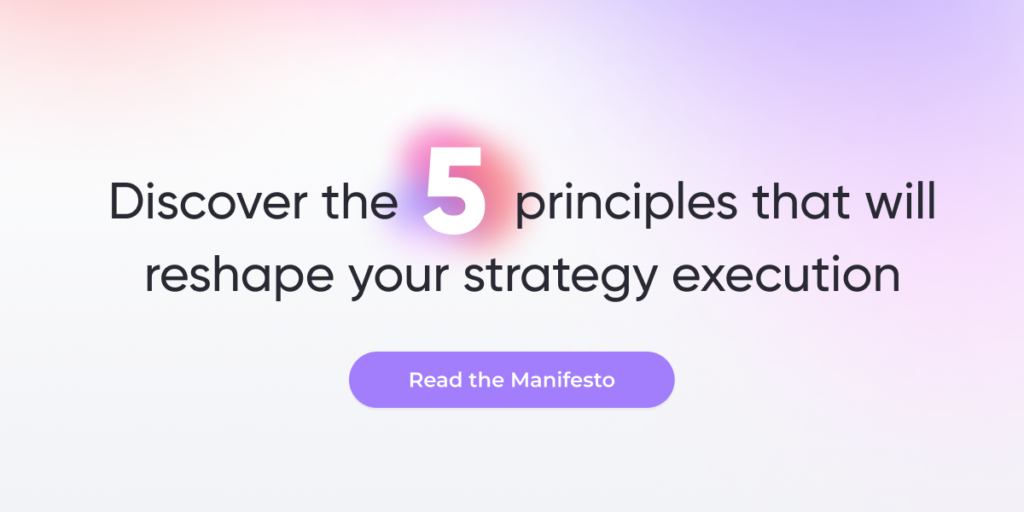When it comes to the employee experience, recruiting top talent and retaining current employees is a surefire way to boost employee morale, increase productivity, and remain competitive in today’s job market.
And while many organisations “wing it” when it comes to recruiting, hiring, and retaining employees, the best way to ensure you have the right people in place is to implement programs that bring in new hires that provide value while reducing employee turnover.
It’s also a great way to fight back against the Great Resignation, one of the hot topics that many organisations have been facing in the last couple of years!
Defining employee retention
Employee retention refers to an organisation’s efforts to prevent high turnover rates and retain its best employees. Companies concerned about retention rates put policies and strategies into place to increase employee satisfaction and retain their best employees.
It is not always about keeping all current employees; rather, it is to retain employees who have the talent, drive, and desire to bring their A-game to work every day and contribute to your organisation’s bottom line.
More Employee Retention Strategies to Improve Engagement and Reduce Turnover
How recruitment impacts retention
HR leaders know that recruitment and retention are inextricably linked, in that if they increase employee engagement and retention, they reduce the need of recruiting new workers.
Happy employees tend to stay at their jobs, and the hiring process needs to take this into account. Recruiters and HR departments need to target and consider hiring new candidates that understand their roles and job descriptions, have a smooth onboarding process, and match the company culture, so their job satisfaction levels stay high.
And once the recruiting process brings in the right talent, a retention strategy of higher wages and employee compensation, better benefits, remote work opportunities, offers of career development, a focus on employee well-being, and a positive work environment that makes everyone feel connected will keep employee retention high.
Those leaders in charge of both recruiting and retention know the importance of both, and how they are intertwined, and their day-to-day efforts should demonstrate that understanding.

Improving talent acquisition and retention
We recently wrote about talent acquisition strategies for HR leaders, and while there are slight strategical differences between recruiting and acquisition programs, the goal is the same: to find the best candidates to fill roles at your business while keeping those high employee retention rates.

Some takeaways on how improving talent acquisition helps to retain your best employees include:
- Have clear, refined job descriptions that match goals and needs
- Build and promote your employer brand to those both in and outside of the business
- When it comes to retention tactics, the most important audience a company has is its own employees
- Invest in a genuine diversity, equity, and inclusion strategy
- Often, the best talent you could hire for your organisation is someone who already works for you and has the ability to do the job
- Communicate culture with both current employees and potential candidates, and work to uphold those values in your retention strategy
9 recruitment and retention strategies that work together
As mentioned earlier, recruitment and retention strategies go hand in hand when it comes to the success of your organisation. It just makes sense they do! When it comes to retention, engaged employees are much more likely to stick around, so efforts and resources should be focused on their experience and future (read: promotions and job opportunities) with the business.
As for recruitment, identifying those applicants who already match company values, culture, and are a fit for open positions will help turn new talent into long-term, engaged employees.
Employers and HR leaders need to combine recruitment and retention strategies to find, hire, and keep the best talent for the needs of their business.
Identify people who are interested in your company for the long term
It can be hard enough to find candidates in this market; don’t make it more difficult by only looking for short-term help. When recruiting talent, search for the type of quality people looking for a new job who would be valuable long-term to the organisation – ones that could eventually be executives and leaders.
These types of employees, the ones who are engaged and working towards a common goal, are often easier to retain, too, which saves time and money you otherwise would have to spend on recruiting.
The goal of HR pros doing recruitment and retention should be to always have a solid pipeline of both internal and external candidates to pull from when the need arises; ones that match your values, do great work, and respond well to the rewards and recognition that your company can provide for them.
Belonging drives engagement
Source and attract more candidates
Speaking of building a reliable pipeline of candidates, your recruiting process should include strategies for attracting top talent into that pipeline so you are always prepared with future employees on hand.
64% of organisations indicate their greatest talent challenge is attracting talent.
Brandon Hall Group
Whether by making sure your career website and job listings are as clear as possible, encouraging current employees to share your company culture with the outside world, attending job fairs and college recruitment events, offering a comprehensive compensation package, or keeping an eye on your competitors (more on that later), your recruitment efforts need to be focused on sourcing and attracting the right job candidates from the labour force so you are able to fill roles as they come available.
Clearly define your brand and what it means to work for you
Remember when we mentioned promoting your employer branding earlier? That’s not just for your employees! If your current staff doesn’t fully understand what your brand stands for, and what it’s like to work for your organisation, how can you expect outside candidates to?
One of the best ways to define your brand and let others know what it means to work for you is to have an effective Employee Value Proposition (EVP) in place. What’s that, you ask? We’ve got you covered:
An EVP is what a company can offer its employees in exchange for their talent, including salary, benefits, training opportunities, stock values, employer brand value, and the quality of its leadership. EVP is the perception of what the employee will gain by joining the employer.
EVP is a vital component of recruiting, hiring, and retaining workers for your organisation, and can separate you from others as being an attractive place to work.
In addition to the above-listed offerings, as part of the recruitment process, you will want candidates to know whether you offer hybrid or remote work opportunities, expected work hours, bonus pay details, company culture, any employee satisfaction numbers you can share publicly, or anything else you think new employees (or potential ones) would want to know and could entice them to join your business.
Promote a culture of diversity, equity, and inclusion
The Washington Post recently reported that Millennial and Gen Z professionals avoid companies without a diverse workforce and “a commitment to confronting systemic racism in their ranks”. Doing so is not only vital to attract top candidates and drive employee retention, but it’s also the right thing to do!
Prioritising DEI at your organisation shows an increasingly diverse workforce that you care about not only their employee experience but their personal well-being, too.

Making systemic DEI changes in your organisation can be a difficult task, but it’s one that all HR leaders and communicators need to do.
If you need assistance communicating with inclusive language to ensure all workers and candidates feel welcomed and treated with respect, check out our inclusive language glossary for some guidance, or read our article Improve your recruiting strategy for a more diverse workforce.
Encourage collaboration and open communication
Open communication between co-workers is important, we all know this. But so is communication between executive and employee, too. Teamwork makes the dream work, so they say!
Companies like to say that the doors are always open for communication, but are they really? A recent Firstup study found that 38.3% of respondents wanted their employer to create better lines of communication between executives and employees.
That same survey saw that employees also want a greater understanding of enterprise-wide decisions and direction, with 31% asking for improvement of transparency across the enterprise.
One way to make sure the doors are really open is to offer channels in your workforce communication platform that allow for two-way communication between leaders and employees. The Firstup platform can help you break down the traditional walls between executives and employees by giving leaders a way to create and post authentic, unfiltered content, whether about management issues or personal antidotes.
Learn the 5 steps organisations can take to increase employee engagement and improve communication satisfaction, regardless of the location
Provide mentorship, training, and employee advancement opportunities
Employees, in general, will want to grow and advance at whatever company they are working for. And if that company (or potential company) doesn’t offer professional development opportunities, chances are they will look elsewhere when agreeing to accept a position.
Clearly communicating these types of opportunities as benefits for new employees during the recruitment process shows you are willing to invest in your people… and in turn, they will invest in your organisation when they come on board. Many companies tend to downplay personal satisfaction at work, and doing so is only detrimental not only to a recruiting strategy but to the success of your business.
And when it comes to retaining employees, human resources will also need to keep existing workers up to date about opportunities for growth, training, and leadership development. Having the chance to learn, grow, and take on additional responsibilities, along with being engaged at work, can help to ensure your employees stick with your company.
Be prepared for turnover
Aside from the Great Resignation that has been taking place the last few years, people always leave their jobs for other positions, opportunities, or personal reasons. This will always be something that HR has to contend with, and they must be prepared to handle it.
This is why having some of the recruitment and retention strategies discussed earlier – before you need them – is so important.
Knowing that workers look for new jobs, organisations should focus on lower turnover rates, not trying to prevent it entirely. It’s a losing battle that cannot be won. Reducing churn is a lot cheaper than recruiting new talent! Instead, do the work necessary for employee retention WHILST building the type of company people will want to work for.
Keep an eye on your competitors
Don’t look at your competitors only as competitors; look at them as if their employees could soon become your employees!
By keeping an eye on competitors or companies you admire, you will have some insight into their open and recently filled jobs – which, in turn, can give some “inside knowledge” of where they may be headed. By paying close attention, you may have the chance to have a leg up on future products or offerings.
The recruitment strategy should incorporate the monitoring of sites like Linkedin to see where people work, where they are going, or if they are open to new opportunities. It should also be for tracking individuals you admire, so when a job opens up that they would be perfect for, you can reach out to them to gauge their interest.
Use data and feedback to your advantage
In order to understand if your recruitment, hiring, and retention efforts are having the desired effect, you will need to study data, feedback, and results as part of your recruitment process.
The Firstup Analyze dashboard, built into our platform, helps employers to monitor and drive action by showing how your people respond to critical initiatives. Business leaders can generate reports on every aspect of an employee engagement and communications program, from executive summaries to in-depth detail.
A big part of success is the ability to always be learning and improving, and that is especially true when trying to hire or retain employees. Knowing what works – and what doesn’t – helps you focus on the future while being agile enough in the present to adjust to ongoing changes. is all about to be continuously learning and improving.

Looking for deeper insights from your employees? Maybe it’s time for an employee listening program, where, through reviews, feedback, polls, or surveys, companies will be better able to understand and act on the needs of their employees.
Conclusion
While finding (and keeping) qualified employees can be difficult in any job market, it is especially difficult right now, when candidates have plenty of jobs to pick and choose from.
Having the resources in place for a successful recruitment and retention program at your business enables you to find and place top talent while keeping your top employees satisfied at work.
It’s time for organisations to put these internal processes into action so that the right people end up at the right place, at the right time. Happy recruiting and retention!
Interested in more information on recruiting and retention?
Check out Talent acquisition strategies for HR leaders
Download PDF








